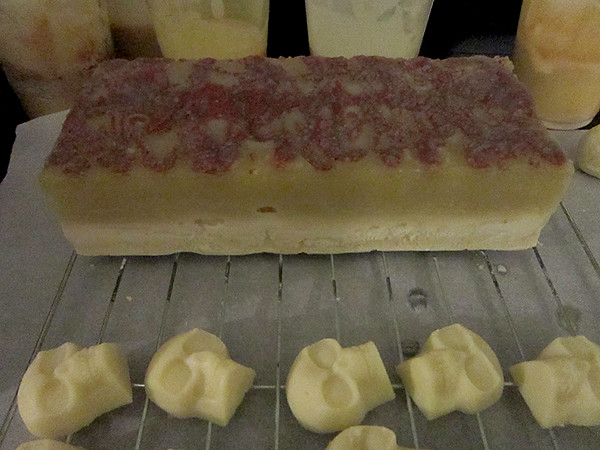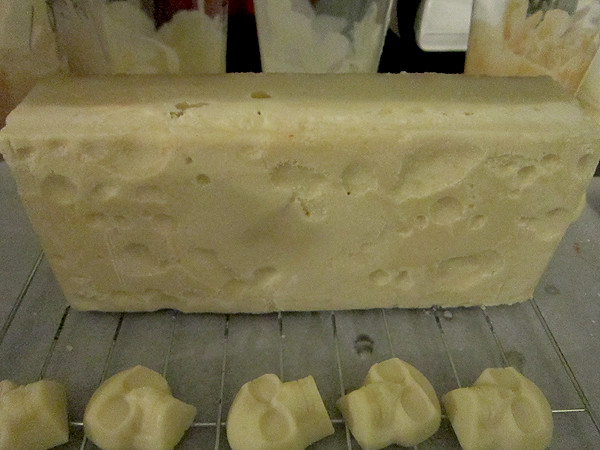mechanolatry
Active Member
Hi, I was wondering if someone could help me figure out the difference between a false trace and when soap really comes to trace?
I'm sorry if this has been covered before, I tried to search but maybe my search-skills are lacking the proper wording? Someone in the forum said when they get a false trace, it looks grainy, but mine didn't. That was all I could really find about the difference.
I believe I had a false trace when I poured the soap, which is why there's such a difference in the top vs. the bottom. After I let it sit for a few hours, I noticed the top was still very oily. I popped it in the oven, and did the CPOP thing, and the next morning it looked like this. It was very, very soft when I unmolded it, but it's firmed up in the past week. Maybe I could shred it up for my personal laundry detergent? There is no lye reaction, so I believe it fully saponified? The soap photos are below. The red on top was colored soap, BTW. And the white and yellowish parts are supposed to be the same soap, no added color or anything. The soap ingredients: distilled water, the same lye I always use, no added fragrance. Just olive, coconut and palm oil. 5% superfatting. No issues with the oils, they are still fresh, and I've used them before. I soaped at a bit higher than room temp. so my oils would fully melt. Maybe I didn't soap at a high enough temperature.
A bit of background- I still consider myself very much a newbie but I have made over a dozen successful CP batches so far. I've never had a false trace before, but I have dealt with ricing, and accelerating FO's. This was my first irreversible disaster. :? I hate wasting soap materials!


I'm sorry if this has been covered before, I tried to search but maybe my search-skills are lacking the proper wording? Someone in the forum said when they get a false trace, it looks grainy, but mine didn't. That was all I could really find about the difference.
I believe I had a false trace when I poured the soap, which is why there's such a difference in the top vs. the bottom. After I let it sit for a few hours, I noticed the top was still very oily. I popped it in the oven, and did the CPOP thing, and the next morning it looked like this. It was very, very soft when I unmolded it, but it's firmed up in the past week. Maybe I could shred it up for my personal laundry detergent? There is no lye reaction, so I believe it fully saponified? The soap photos are below. The red on top was colored soap, BTW. And the white and yellowish parts are supposed to be the same soap, no added color or anything. The soap ingredients: distilled water, the same lye I always use, no added fragrance. Just olive, coconut and palm oil. 5% superfatting. No issues with the oils, they are still fresh, and I've used them before. I soaped at a bit higher than room temp. so my oils would fully melt. Maybe I didn't soap at a high enough temperature.
A bit of background- I still consider myself very much a newbie but I have made over a dozen successful CP batches so far. I've never had a false trace before, but I have dealt with ricing, and accelerating FO's. This was my first irreversible disaster. :? I hate wasting soap materials!






